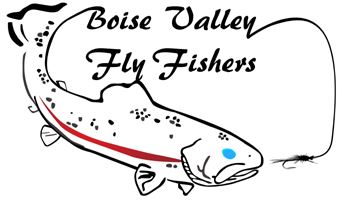Water temperature is the “master variable” in fishing because it drives trout metabolism, which effects how often they eat and what kind of water they hold in. By using a stream thermometer and understanding the impact of water temperature on trout, anglers can improve their fishing.

PREFERRED WATER TEMPERATURE
Trout have a window of preferred water temperature where they are the most active and using a stream thermometer can help you find fish that are more likely to eat your fly! For example:
- In late Fall, water is often warmer below a Tailwater Dam than it is in a Freestone River, which means hatches will be better and fish will be more active.
- In Spring, the water below that same Tailwater Dam will often be colder than a Freestone River. This means bug hatches and fishing will be better further downstream where the water has time to warm up.
- In the dog-days of Summer, water can exceed the trout’s preferred water temperature and turn fishing off. During this time, fishing early in the morning or further upstream will give you better results. Remember that water temperatures often fluctuate 10 degrees during the day, so remember to re-check water temps in the afternoon.



TROUT HOLDING WATER
Water temperature impacts where trout will hold in the river and paying attention to water temperature will help you choose the most productive water to fish. In general, remember that:
- The warmer the water, the faster the trout’s metabolism and they will gravitate to faster water.
- The colder the water, the slower the trout’s metabolism and they prefer to hold in slower water.
In the summer when water temperatures are in the upper 50’s to low 60’s, trout can be in any water type (riffles, runs and pools). Trout eat constantly at these temperatures and they can most often be found in faster riffles and boulder pocket-water where there is more food and oxygen.
As water cools in the Fall, trout will start backing out of those fast riffles and when water temperatures drop below 45 degrees trout will gravitate to the transition water between the riffle and the run below. Once water temperatures drop below 40 degrees the trout’s metabolism slows and they move into deeper, slower runs and pools where they will hold all winter.
In early Spring, as water warms, the trout’s metabolism starts to increase. As the sun angle gets higher in the sky, water temperatures start warming considerably during the day. By the end of March water temperatures on a sunny day can rise 10 degrees, often warming from the upper 30s to the upper 40s, which gets the bugs hatching and the trout eating! During these days trout will hang-back in the slow deep water in the morning, but by the afternoon they will be actively eating up at the riffle transitions and even move up into the lower ends of riffles. A good time for a Skwala dry fly with a nymph dropper!
HATCHES
Trout metabolism is closely tied to bug activity, and as water warms, bug hatches pick-up and the trout’s appetite increases. Your stream thermometer can help you anticipate what bugs are likely to hatch. I find this particularly helpful in late Winter and early Spring. Some key water temperature ranges for Springtime insect hatches are:
- Midges like to hatch when water gets into the low 40’s.
- BWOs will hatch starting in the mid 40’s and continues into the low 50’s.
- Skwalas like to hatch when water temperatures get into the upper 40’s.
CUTTHROAT TROUT
If you are going after the BVFF Cutthroat Challenge, it is helpful to know that Cutthroat trout prefer colder water than their Rainbow and Brown Trout cousins, which is why they are found in higher mountain streams. Idaho’s Westslope Cutthroat Trout have adapted to live in mountain streams where water temperatures have more extreme variation and they tend to migrate to find their preferred water temperature, so it pays to use your stream thermometer to find them. For example, studies have tracked Westslopes migrating over 100 miles on the Middle Fork of the Salmon River: In the winter they held in the Main Salmon River where it was warmer and in the summer they migrated up as far as Bear Valley creek to find cooler waters.
On hot summer days trout can often be found hanging out at the mouth of cooler tributaries. One Idaho Fish and Game snorkel survey on the upper Salmon River found that the majority of trout were holding very close the mouths of cooler tributaries. Something to keep in mind when you are out fishing this summer.


